Topics
Category
Era
Origins of the NAACP in Minnesota, 1912–1920
Fredrick McGhee, ca.1910. McGhee was an attorney and civil rights leader in St. Paul. He led the effort to establish a chapter of the NAACP in Minnesota.
In the years leading up to and immediately following World War I, African Americans in St. Paul, Minneapolis, and Duluth established separate chapters of the recently formed National Association for the Advancement of Colored People (NAACP).
About seven thousand African Americans lived in Minnesota during the early decades of the 1900s. The vast majority of them resided in St. Paul and Minneapolis. In recent years, a small core of community leaders from the cities’ black professional class had established a series of organizations to promote civil rights, but those groups had all declined due to some combination of neglect, indifference, and ineffectiveness.
It wasn’t until 1909, when a new organization called the National Association for the Advancement of Colored People (NAACP) was formed, that significant numbers of African Americans in the Twin Cities began actively participating in a viable, nationwide civil rights movement.
The NAACP was an outgrowth of the Niagara Movement, a civil rights organization founded several years earlier by prominent black leaders including W. E. B. Du Bois and St. Paul attorney Fredrick McGhee. On March 12, 1912, McGhee, physician Valdo Turner, and several other members of St. Paul’s African American community met to create a new organization called the Twin City Protective League. Despite opposition from members who objected to the activist policies of Du Bois and his allies, the new group voted to affiliate with the NAACP.
McGhee died several months later, but his colleagues carried on his cause. In the fall of 1913, the St. Paul group applied for and received its NAACP charter, officially becoming a branch of the national organization. A few months later, another group of prominent black leaders including attorney Gale P. Hilyer established a separate NAACP branch in Minneapolis.
Both NAACP branches struggled to build membership and raise funds during their early years. But they still managed to mount several high profile campaigns on behalf of the cities’ African Americans. Most notably, they fought to prevent public showings of the groundbreaking but blatantly racist motion picture The Birth of a Nation, in 1915. Gale Hilyer, for one, objected to the movie’s demeaning depictions of African Americans, calling it “prejudiced and unfair.”
The two branches failed to stop the exhibition of the movie. They did, however, gain several concessions. In St. Paul, exhibitors agreed to cut two particularly offensive scenes from the film. In Minneapolis, Mayor Wallace Nye set up a board of censors to consider the black community’s objections. Other campaigns conducted by the two NAACP branches included an attempt to gain the release from prison of a black teenager convicted of forging a seventeen-dollar check, and a successful effort to reinstate an African American public school teacher in St. Paul.
The two branches’ focus shifted with the United States’ entry into World War I. Although labor shortages on the home front forced employers to open positions that had previously been closed to African Americans, NAACP leaders feared hiring discrimination would return once the war ended.
Minneapolis NAACP Secretary R. Augustine Skinner was among several Twin Cities black leaders who believed African Americans could best protect their wartime gains by demonstrating patriotism. He called for them to unite in support of the NAACP as an advocate for their rights.
The Twin Cities NAACP branches played what may have been their most urgent early role in the aftermath of racial violence 150 miles north, in Duluth. On June 15, 1920, a mob broke into the Duluth city jail and lynched three black circus workers who were being held there as suspects in an alleged rape. In the days that followed, seven other black men were indicted in the rape, despite a lack of physical evidence. The NAACP branches in St. Paul and Minneapolis mobilized to defend them. The branches solicited donations and hired attorneys to represent the accused.
In the end, the lawyers secured by the NAACP succeeded in getting charges against five of the men dropped. Of the two defendants who went to trial, one was acquitted and one was convicted. The Twin Cities branches’ efforts on behalf of the accused helped overcome skepticism about the NAACP in Duluth’s African American community and led to the establishment of that city’s NAACP branch in 1920.
Bibliography
“An Appeal for Memberships.” Minneapolis Twin City Star, January 12, 1918.
http://newspapers.mnhs.org/web/mhsnews/web/imu.php?request=multimedia&irn=10282817&format=pdf&kind=supplementary
“‘Birth of Nation’ Barred by Mayor.” Minneapolis Journal, October 17, 1915.
“‘Birth of Nation’ Action Postponed.” St. Paul Daily News, October 26, 1915.
“Censorship Plan to be Permanent, Mayor Announces.” Minneapolis Journal, November 24, 1915.
“Citizens Plan Organization.” Minneapolis Twin City Star, March 16, 1912.
http://newspapers.mnhs.org/web/mhsnews/web/imu.php?request=multimedia&irn=10281508&format=pdf&kind=supplementary
“Film Play Cut, But Negro Protests.” St. Paul Daily News, October 28, 1915.
“A Good Movement Started.” St. Paul Appeal, March 16, 1912.
http://newspapers.mnhs.org/web/mhsnews/web/imu.php?request=multimedia&irn=10138015&format=pdf&kind=supplementary
“Here are the Facts.” Minneapolis Messenger, November 5, 1921.
http://newspapers.mnhs.org/web/mhsnews/web/imu.php?request=multimedia&irn=10279939&format=pdf&kind=supplementary
“An Important Meeting.” Minneapolis Twin City Star, July 10, 1915.
http://newspapers.mnhs.org/web/mhsnews/web/imu.php?request=multimedia&irn=10282207&format=pdf&kind=supplementary
Kellogg, Charles Flint. NAACP: A History of the National Association for the Advancement of Colored People. Baltimore: Johns Hopkins Press, 1967.
McWatt, Arthur C. Crusaders for Justice: A Chronicle of Protest by Agitators, Advocates and Activists in Their Struggle for Civil and Human Rights in St. Paul, Minnesota, 1802–1985. Brooklyn Park, MN: Papyrus Publishing, 2009.
“Miss Lealtad’s Case Taken Up.” Minneapolis Twin City Star, November 10, 1917.
http://newspapers.mnhs.org/web/mhsnews/web/imu.php?request=multimedia&irn=10282742&format=pdf&kind=supplementary
National Association for the Advancement of Colored People Fourth Annual Report, 1913. New York: Allied Printing, 1914.
National Association for the Advancement of Colored People Fifth Annual Report, 1914. [New York?]: N.p., [1915].
National Association for the Advancement of Colored People Sixth Annual Report, 1915. [New York?]: N.p., [1916].
“A New Organization.” Minneapolis Twin City Star, October 3, 1913.
http://newspapers.mnhs.org/web/mhsnews/web/imu.php?request=multimedia&irn=10281867&format=pdf&kind=supplementary
Report of the National Association for the Advancement of Colored People for the Years 1917 and 1918. New York: Allied Printing, 1919.
“Reports are Made on Duluth Lynching.” St. Paul Appeal, July 10, 1920.
http://newspapers.mnhs.org/web/mhsnews/web/imu.php?request=multimedia&irn=10139803&format=pdf&kind=supplementary
“Rev. Beasley Takes Action to Better Negroes’ Conditions.” Minneapolis Twin City Star, November 3, 1917.
http://newspapers.mnhs.org/web/mhsnews/web/imu.php?request=multimedia&irn=10282737&format=pdf&kind=supplementary
“Twin City Protective League.” Minneapolis Twin City Star, March 30, 1912.
http://newspapers.mnhs.org/web/mhsnews/web/imu.php?request=multimedia&irn=10281518&format=pdf&kind=supplementary
Related Resources
Primary
“Citizens Mass Meeting.” St. Paul Appeal, December 11, 1920
http://newspapers.mnhs.org/web/mhsnews/web/imu.php?request=multimedia&irn=10139897&format=pdf&kind=supplementary
“Dr. J. E. Spingarn Visits the Twin Cities and Delivers Several Addresses.” St. Paul Appeal, January 30, 1915.
http://newspapers.mnhs.org/web/mhsnews/web/imu.php?request=multimedia&irn=10138644&format=pdf&kind=supplementary
Johnson, Joseph Evan. Interview by Maurice Haynes, June 27, 1958, Minnesota Historical Society.
“Meeting of the NAACP.” Minneapolis National Advocate, January 31, 1920.
http://newspapers.mnhs.org/web/mhsnews/web/imu.php?request=multimedia&irn=10280582&format=pdf&kind=supplementary
“A Meeting to Protest Against Injustices.” Minneapolis Twin City Star, December 7, 1918.
http://newspapers.mnhs.org/web/mhsnews/web/imu.php?request=multimedia&irn=10283128&format=pdf&kind=supplementary
Secondary
Delton, Jennifer. “Labor, Politics, and African American Identity in Minneapolis, 1930-1950,” In The North Star State: A Minnesota History Reader, edited by Anne J. Aby, 316–334. St. Paul: Minnesota Historical Society Press, 2002.
Kenney, Dave. Twin Cities Picture Show: A Century of Moviegoing. St. Paul: Minnesota Historical Society Press, 2007.
Nelson, Paul D. Frederick L. McGhee: A Life on the Color Line, 1861-1912. St. Paul: Minnesota Historical Society Press, 2002.
Spangler, Earl. The Negro in Minnesota. Minneapolis: T.S. Denison and Co., 1961.
Taylor, David Vassar. “The Blacks,” In They Chose Minnesota: A Survey of the State’s Ethnic Groups, edited by June Drenning Holmquist, 73–91. St. Paul: Minnesota Historical Society, 1981.
Related Images
Charles Sumner Smith was Captain of Company D of the Sixteenth Battalion, Minnesota Home Guard. He was a founding member of the Twin Cities Protective League and the Minneapolis NAACP. After the Duluth lynchings he helped with the founding of the Duluth NAACP. Image is from the St. Paul Appeal, August 25, 1917.
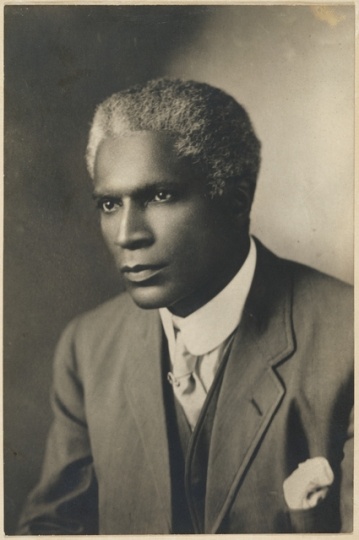
Frederick (or Fredrick) L. McGhee
Fredrick McGhee, ca.1910. McGhee was an attorney and civil rights leader in St. Paul. He led the effort to establish a chapter of the NAACP in Minnesota.
Public domain
Holding Location
More Information
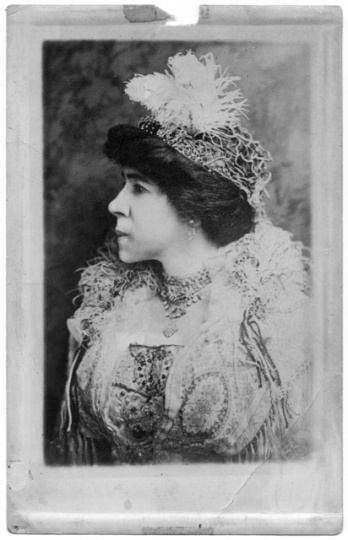
Amanda Lyles
Amanda Lyles, ca. 1913. Lyles sat on the Executive Committee of the St. Paul chapter of the NAACP in 1914. Photograh by Kregel Photo Parlors.
Public domain
Holding Location
More Information
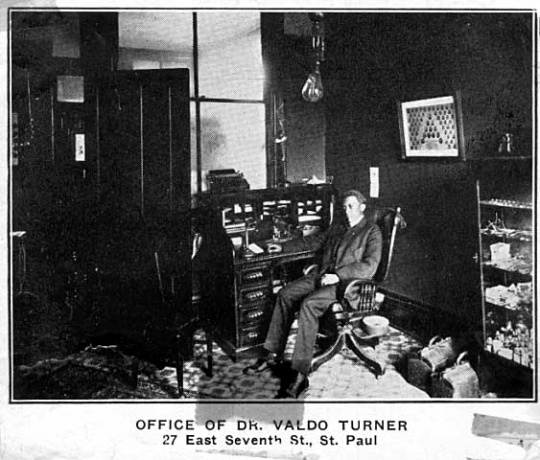
Dr. Valdo Turner
Dr. Valdo Turner in his office, ca.1915. Turner was vice president of the St. Paul NAACP and captain of the Sixteenth Battalion Medical Corps, Minnesota Home Guard.
Public domain
Holding Location
More Information
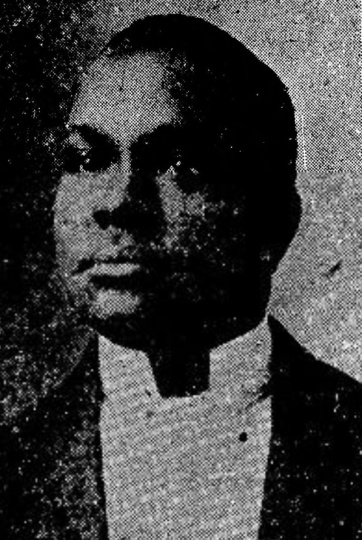
Charles H. Miller
Charles Miller was a founding member of the St. Paul NAACP and led the Sixteenth Battalion Drum Corps. Image is from the St. Paul Appeal, March 31, 1917.
Public domain
Holding Location
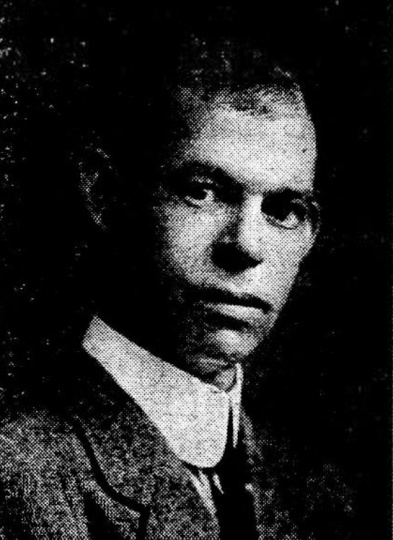
Charles Sumner Smith
Charles Sumner Smith was Captain of Company D of the Sixteenth Battalion, Minnesota Home Guard. He was a founding member of the Twin Cities Protective League and the Minneapolis NAACP. After the Duluth lynchings he helped with the founding of the Duluth NAACP. Image is from the St. Paul Appeal, August 25, 1917.
Public domain
Holding Location

Jose Sherwood
Jose Sherwood, ca. 1918. Sherwood was a leading figure in St. Paul's African American community. He helped found the St. Paul chapter of the NAACP.
Public domain
Holding Location
More Information

Gale Pillsbury Hilyer
Gale Pillsbury Hilyer, ca.1919. Hilyer was captain of Company C of the Sixteenth Battalion, Minnesota Home Guard and a founding member of the Minneapolis NAACP. Image is from the Minneapolis National Advocate, March 15, 1919.
Public domain
Holding Location
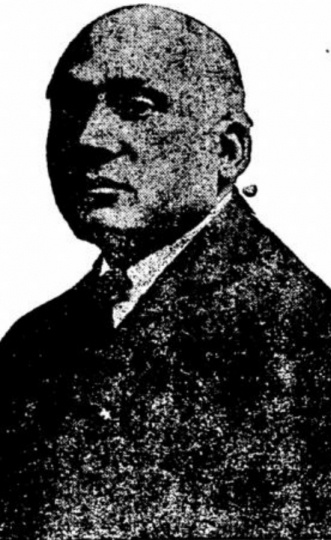
William R. Morris
William R. Morris, ca.1919. Morris became captain of Company D of the Sixteenth Battalion, Minnesota Home Guard and was also a founding member of the Minneapolis NAACP. Image is from the Minneapolis National Advocate, March 15, 1919.
Public domain
Holding Location
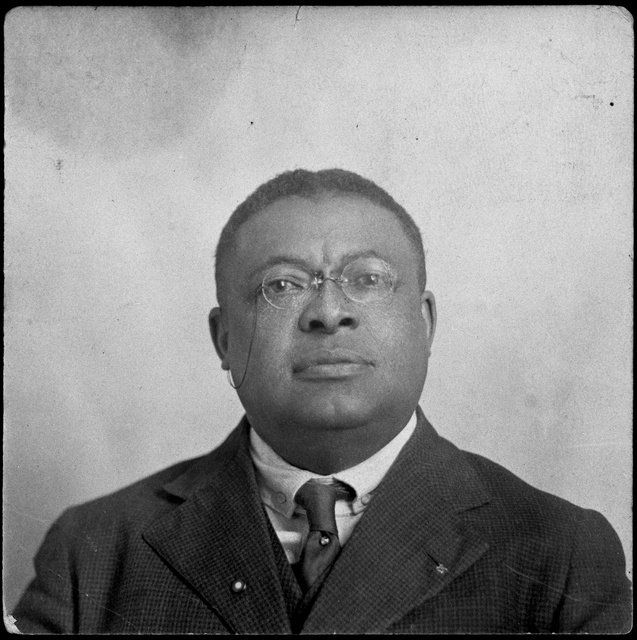
Orrington C. Hall
Orrington C. Hall, ca.1920. Hall commanded Company B of the Sixteenth Battalion, Minnesota Home Guard. He was also a founding member of the St. Paul NAACP.
Public domain
Holding Location
More Information
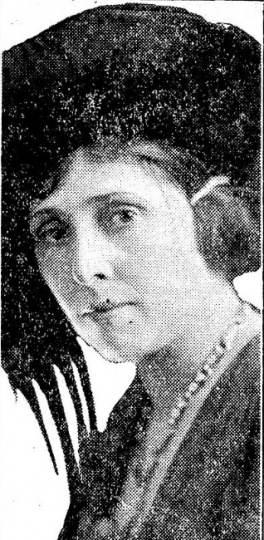
Nellie Francis
Nellie Francis, ca. 1921. Francis was a founding member of the NAACP, a Women's Suffrage activist, and champion of Minnesota's anti-lynching bill. Photograph is from the St. Paul Appeal May 7, 1921.
Public domain
Holding Location
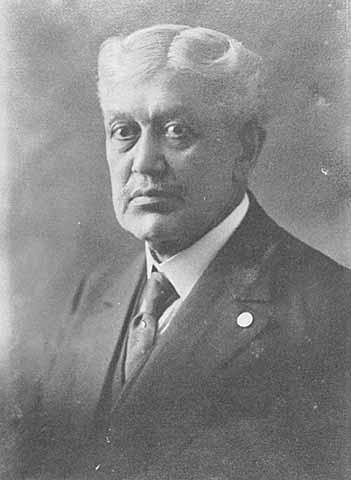
John Quincy Adams
John Quincy Adams, editor of the Western Appeal, and founding member of the St. Paul NAACP, ca.1922.
Public domain
Holding Location
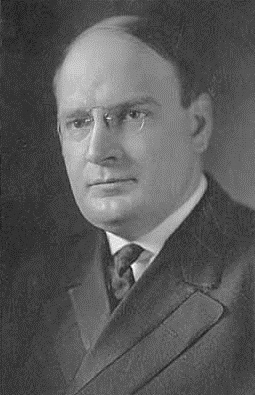
J.A.A. Burnquist
Joseph Alfred Arner Burnquist, ca. 1913. Burnquist was governor of Minnesota from 1915 to 1921. He also served as president of the St. Paul chapter of the NAACP between 1914 and ca. 1921.
Public domain
Holding Location
More Information
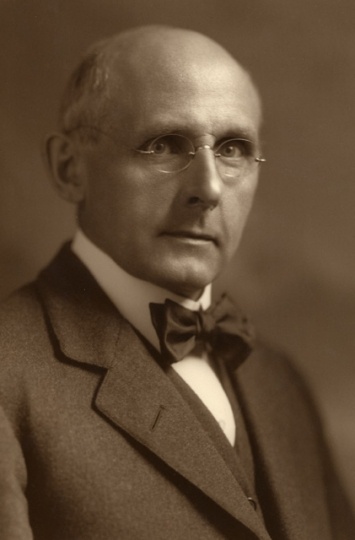
Edward Foote Waite
Edward Foote Waite, 1918. Along with his other work, Waite was a founding member of the Minneapolis NAACP. Photograph by the Lee Brothers.
Public domain
Holding Location
More Information
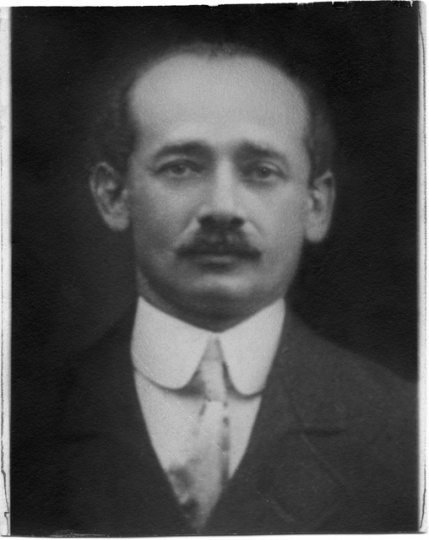
Samuel Deinard
Samuel Deinard, c.1905. Deinard served as president of the Minneapolis NAACP in 1914.
Public domain
Holding Location
More Information
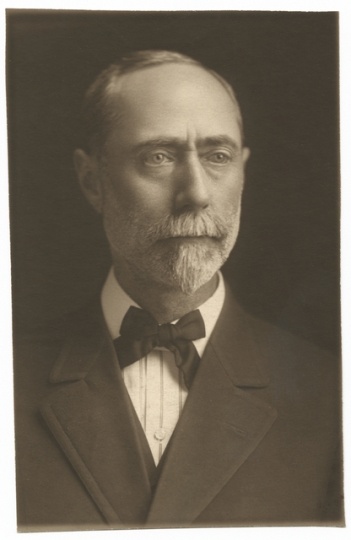
Judge Grier M. Orr
Judge Grier M. Orr, ca. 1917. Orr was an early member of the St. Paul NAACP.
Public domain
Holding Location
More Information
Related Articles
Turning Point
In 1913, the St. Paul branch of the National Association for the Advancement of Colored People receives its charter. The Minneapolis branch receives its charter the following year.
Chronology
1909
1912
1913
1914
1914
1915
1915
1918
1920
1920
Bibliography
“An Appeal for Memberships.” Minneapolis Twin City Star, January 12, 1918.
http://newspapers.mnhs.org/web/mhsnews/web/imu.php?request=multimedia&irn=10282817&format=pdf&kind=supplementary
“‘Birth of Nation’ Barred by Mayor.” Minneapolis Journal, October 17, 1915.
“‘Birth of Nation’ Action Postponed.” St. Paul Daily News, October 26, 1915.
“Censorship Plan to be Permanent, Mayor Announces.” Minneapolis Journal, November 24, 1915.
“Citizens Plan Organization.” Minneapolis Twin City Star, March 16, 1912.
http://newspapers.mnhs.org/web/mhsnews/web/imu.php?request=multimedia&irn=10281508&format=pdf&kind=supplementary
“Film Play Cut, But Negro Protests.” St. Paul Daily News, October 28, 1915.
“A Good Movement Started.” St. Paul Appeal, March 16, 1912.
http://newspapers.mnhs.org/web/mhsnews/web/imu.php?request=multimedia&irn=10138015&format=pdf&kind=supplementary
“Here are the Facts.” Minneapolis Messenger, November 5, 1921.
http://newspapers.mnhs.org/web/mhsnews/web/imu.php?request=multimedia&irn=10279939&format=pdf&kind=supplementary
“An Important Meeting.” Minneapolis Twin City Star, July 10, 1915.
http://newspapers.mnhs.org/web/mhsnews/web/imu.php?request=multimedia&irn=10282207&format=pdf&kind=supplementary
Kellogg, Charles Flint. NAACP: A History of the National Association for the Advancement of Colored People. Baltimore: Johns Hopkins Press, 1967.
McWatt, Arthur C. Crusaders for Justice: A Chronicle of Protest by Agitators, Advocates and Activists in Their Struggle for Civil and Human Rights in St. Paul, Minnesota, 1802–1985. Brooklyn Park, MN: Papyrus Publishing, 2009.
“Miss Lealtad’s Case Taken Up.” Minneapolis Twin City Star, November 10, 1917.
http://newspapers.mnhs.org/web/mhsnews/web/imu.php?request=multimedia&irn=10282742&format=pdf&kind=supplementary
National Association for the Advancement of Colored People Fourth Annual Report, 1913. New York: Allied Printing, 1914.
National Association for the Advancement of Colored People Fifth Annual Report, 1914. [New York?]: N.p., [1915].
National Association for the Advancement of Colored People Sixth Annual Report, 1915. [New York?]: N.p., [1916].
“A New Organization.” Minneapolis Twin City Star, October 3, 1913.
http://newspapers.mnhs.org/web/mhsnews/web/imu.php?request=multimedia&irn=10281867&format=pdf&kind=supplementary
Report of the National Association for the Advancement of Colored People for the Years 1917 and 1918. New York: Allied Printing, 1919.
“Reports are Made on Duluth Lynching.” St. Paul Appeal, July 10, 1920.
http://newspapers.mnhs.org/web/mhsnews/web/imu.php?request=multimedia&irn=10139803&format=pdf&kind=supplementary
“Rev. Beasley Takes Action to Better Negroes’ Conditions.” Minneapolis Twin City Star, November 3, 1917.
http://newspapers.mnhs.org/web/mhsnews/web/imu.php?request=multimedia&irn=10282737&format=pdf&kind=supplementary
“Twin City Protective League.” Minneapolis Twin City Star, March 30, 1912.
http://newspapers.mnhs.org/web/mhsnews/web/imu.php?request=multimedia&irn=10281518&format=pdf&kind=supplementary
Related Resources
Primary
“Citizens Mass Meeting.” St. Paul Appeal, December 11, 1920
http://newspapers.mnhs.org/web/mhsnews/web/imu.php?request=multimedia&irn=10139897&format=pdf&kind=supplementary
“Dr. J. E. Spingarn Visits the Twin Cities and Delivers Several Addresses.” St. Paul Appeal, January 30, 1915.
http://newspapers.mnhs.org/web/mhsnews/web/imu.php?request=multimedia&irn=10138644&format=pdf&kind=supplementary
Johnson, Joseph Evan. Interview by Maurice Haynes, June 27, 1958, Minnesota Historical Society.
“Meeting of the NAACP.” Minneapolis National Advocate, January 31, 1920.
http://newspapers.mnhs.org/web/mhsnews/web/imu.php?request=multimedia&irn=10280582&format=pdf&kind=supplementary
“A Meeting to Protest Against Injustices.” Minneapolis Twin City Star, December 7, 1918.
http://newspapers.mnhs.org/web/mhsnews/web/imu.php?request=multimedia&irn=10283128&format=pdf&kind=supplementary
Secondary
Delton, Jennifer. “Labor, Politics, and African American Identity in Minneapolis, 1930-1950,” In The North Star State: A Minnesota History Reader, edited by Anne J. Aby, 316–334. St. Paul: Minnesota Historical Society Press, 2002.
Kenney, Dave. Twin Cities Picture Show: A Century of Moviegoing. St. Paul: Minnesota Historical Society Press, 2007.
Nelson, Paul D. Frederick L. McGhee: A Life on the Color Line, 1861-1912. St. Paul: Minnesota Historical Society Press, 2002.
Spangler, Earl. The Negro in Minnesota. Minneapolis: T.S. Denison and Co., 1961.
Taylor, David Vassar. “The Blacks,” In They Chose Minnesota: A Survey of the State’s Ethnic Groups, edited by June Drenning Holmquist, 73–91. St. Paul: Minnesota Historical Society, 1981.
















